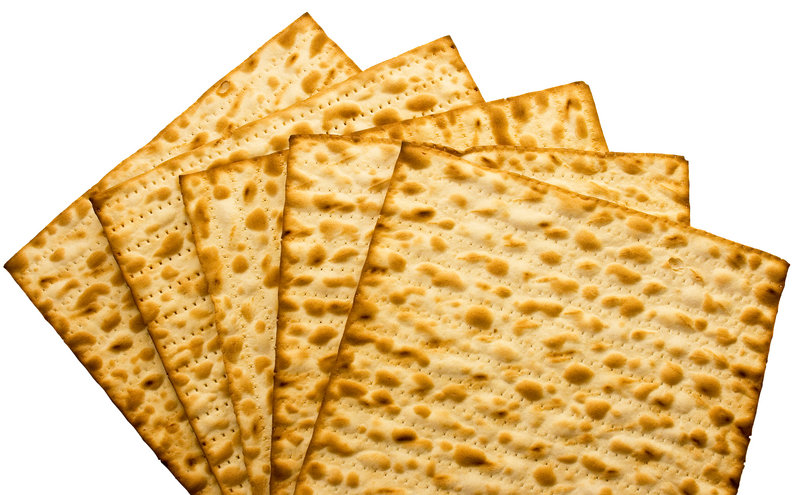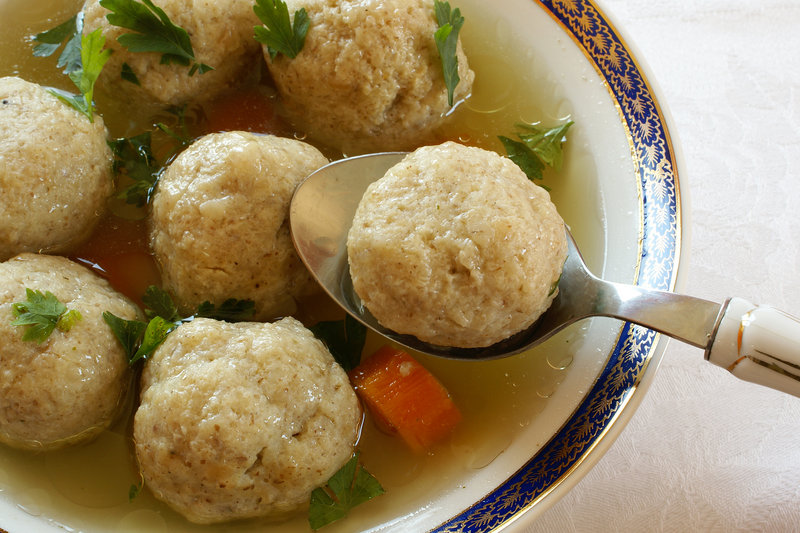It was a happy and unexpected surprise to discover that Portland is the number 23 Jewish city in America, with Jews being 2.3 percent of the population. As any rabbi will tell you, there are also a large percentage of intermarriages in Maine.
These statistics are a great help in exercising the Seder’s greatest mitzvah of inviting others to Seder. We don’t have to go out of our way to make non-Jews feel comfortable at Passover. We should mainly be open to invite questions and answer them so our guests won’t feel like Marilyn Monroe did.
While married to Arthur Miller, Monroe was invited to a Seder at the Millers’ home. When chicken soup and kneidlach (matzo balls) were served, Monroe scarfed them down eagerly and asked her hosts what she was eating. The Millers replied, “matzo balls.” Monroe asked, “When do we eat the rest of the matzo?”
This old chestnut is a good introduction to understanding what non-Jews with no prior experience might feel at the Seder. While Christian holidays are mostly joyous, Passover, which begins Friday evening, commemorates hardship, escape from slavery and revenge exacted by Jews on their Egyptian captors. The matzo is meant to be dry. The maror, the bitter roots and herbs, symbolizes the bitterness of slavery. The charoset, a sweet paste, is a reminder of the mortar used by Jews to cement the bricks used to build the pyramids.
At my first Passover in Maine, I was appointed by the host to explain the basics of the Seder to a non-Jewish couple whom she had invited. Because I was the only Israeli at the table, it was assumed I was the best man for the job. After many years at the task, my Seder is an abridged one and was not to the host’s liking, mainly because I resort to shortcuts, a form of a survival mode.
This is the first tip to non-Jews: The reading of the Haggadah before the meal is served feels endless because it is. Don’t skimp on the traditional noshing and nibbling the Haggadah dictates. A good charoset could be quite tasty, and so is the maror, which is now replaced by hot hrain (horseradish). Use the matzo as you would regular bread, and heap the charoset and horseradish on it lavishly.
A Seder entails drinking four cups of wine. That used to be a problem in the past, when kosher wine was a sweet Mogen David. Every decent supermarket or wine store today carries a nice selection of drinkable varietal wines. There’s no excuse to drink dreck when wineries like Baron Herzog and the Israeli Yarden and Recanati are available. A Seder is not a potluck dinner, so make your contribution with a couple of bottles of wine. Just make sure they’re kosher.
I did my best to explain to our guests the progression of the Seder, but I’ll never forget the expression on the couple’s faces: It was one of utter bewilderment, incomprehension and even dismay at the brutality – either perpetrated by or inflicted on Jews – that the Seder commemorated. Jewish history is so heavily scarred by misdeeds that befell us, it’s hard for non-Jews not to shoulder some guilt. It’s heavily implied.
Here are some other tips for those unfamiliar with a Passover Seder:
• Although a matzo is quite dusty, a good one can be tasty. Make sure to smear something on it.
• The zeroa on the Seder plate is a roasted lamb or chicken bone symbolizing Passover sacrifice — don’t eat it.
• There’s no limit to how much wine you can drink, so drink responsibly.
• The karpas, usually parsley, is tangy and refreshing when dunked in salted water.
• Leave your feminist views at home. Seder is chauvinistic by definition. The males are lounging on pillows and the women serve them hand and foot.
• An orange wedge on the Seder plate is an indication that your hosts supports the role of women in Jewish history, while tradition remains fuzzy on the matter.
• The extra wine cup on the table and the open main door, although it may be 20 degrees outside, are left for the prophet Elijah, in case he decides to drop by.
• Honor the children by listening to the youngest sing “Ma Nishtana” (the four questions) and help with hiding the Afikomen, a piece of matzo hidden for them to find for a ransom.
• The 10 plagues are the hardest. While naming them – blood, frogs, lice, wild animals, pestilence, boils, hail, locusts, darkness and killing of the firstborn – the participants remove a drop of wine from their cup with a fingertip.
Once this is over, you’re home free. The meal, when it finally rolls in, should be terrific.
Ron Maiberg is a freelance writer and author who lives in Sedgwick.
Send questions/comments to the editors.




Success. Please wait for the page to reload. If the page does not reload within 5 seconds, please refresh the page.
Enter your email and password to access comments.
Hi, to comment on stories you must . This profile is in addition to your subscription and website login.
Already have a commenting profile? .
Invalid username/password.
Please check your email to confirm and complete your registration.
Only subscribers are eligible to post comments. Please subscribe or login first for digital access. Here’s why.
Use the form below to reset your password. When you've submitted your account email, we will send an email with a reset code.